 Sub-Saharan African countries have over the last few decades recorded strong growth rates, resulting in an average growth of about 5% in the region in 2014. Countries such as Côte d’Ivoire, Kenya and Senegal have continued to perform well in spite of the notable drop in 2015 as a result of the fall in oil prices.
Sub-Saharan African countries have over the last few decades recorded strong growth rates, resulting in an average growth of about 5% in the region in 2014. Countries such as Côte d’Ivoire, Kenya and Senegal have continued to perform well in spite of the notable drop in 2015 as a result of the fall in oil prices.
Despite these performances, most Sub-Saharan African countries continued to be plagued by high levels of poverty and inequalities and low standards of health and education systems, which explain the reason for their very low Human Development Index (HDI). According to the 2015 UNDP report on Human Development, 38 of the 48 Sub-Saharan countries are ranked among the fourth and last categories of countries with the lowest Human Development.
This situation can be attributed to a lack of exploitation of all the potentials available to these African countries. These include potentials offered by the seas, oceans, lakes and rivers, through fishing, tourism, commerce, energy supply and the production of pharmaceutical products which ensure the creation of wealth and employment. While maritime commerce can be said to be developed in the coastal nations of sub-Saharan Africa, fishing, tourism, energy and pharmaceutical production remain under exploited.
This article revisits the under-exploited aspects of the Blue economy in the Sub-Saharan African region that offer a strong economic growth potential for the region.
Tourism: An under-exploited but important revenue-generating sector for Sub-Saharan Africa
According to the World Tourism Organization, Global revenues for tourism was about $1.5 billion in 2014, in which $221 billion was revenue from passenger transportation and $1245 billion was from visitors’ expenditures in accommodation, food and drinks, leisure, shopping and other goods and services. This offers a really great opportunity in direct employment, particularly for the youth.
However, although the global revenues for tourism were high, Africa was only able to gain 3% from this total revenue – which equals less than 3% for Sub-Saharan Africa. This low tourism revenue rates is due to lack of significant political action that ensures revenue growth in the tourism sector. This lack of policy is characterized by under-equipped and under-managed beaches, inadequate infrastructure, a lack of promotion of tourist sites, and oftentimes a high political instability. If Sub-Saharan African countries, through the tourism potentials that the oceans offer can improve their tourism sector and achieve at least 10% from the global revenue for tourism totaling about $150 billion, they would then be able to have additional resources to finance other developmental projects.
Fisheries and Aquaculture: Low African Productivity in the global market
The Food and Agricultural Organization (FAO) in its 2016 report on the State of the World Fisheries and Aquaculture highlights the fact that fish continue to be one of the most traded basic commodities globally, and that more than half of the these exports are from developing countries. However, African marine and coastal aquaculture production was only 0.2% in 2014 (FAO 2014). This then gives a lower estimated turnover for Sub-Saharan Africa.
Considering the fact that Africa has an estimated maritime area of about 13 million square kilometers, it is a wonder why African production is not large enough. The importance of fishery and aquaculture in the economic transformation of Sub-Saharan African countries towards inclusive economies lies in their ability to create direct employment particularly for the underprivileged population. For example in Mauritius, 29,400 jobs were created through the Fishing sector in 2014, according to the FAO.
More so, there is no doubt that fishery and aquaculture have played an important role in the economic expansion of Asian countries over the past decades. That 53% of the global maritime and coastal aquaculture production of fish come from Asia in 2014, is proof of this fact. In other words, the global exports of fish, cited at the beginning of this section, come principally from Asian countries.
Hydro-electricity: Harnessing the Potential to fully Power Africa
Energy is undoubtedly essential in the economic development of any country. Electricity is vital for the proper functioning of services such as health and education, as well as for the smooth running of businesses that create employment.
Access to electricity, especially in the rural areas would help in the creation of a certain employment, allowing the structural reduction of the level of poverty. Despite these benefits however, according to the African Development Bank, more than 640 million Africans do not have access to power, which corresponds to an access rate of just over 40%. The same source states that the energy consumption per capita in Sub-Saharan Africa (excluding South Africa) is about 180kWh, a far cry from 13,000 kWh per capita in the U.S, and 6,500 kWh in Europe.
Despite the fact that Hydroelectricity supplies about a fifth of the current energy capacity, this represents only a tenth of its total output. Yet according to the International Energy Agency, the ocean’s renewable energy could supply up to 400% of the global demand. Simply put, the 28 coastal countries in Africa can fully power up their population and can equally export energy to the remaining 20 Sub-Saharan African countries. African states must therefore consider further exploitation of hydroelectricity so as to supply energy to their populations. This would enable the creation of jobs and ensure an all-inclusive growth.
Climate-change awareness
Despite their enormous provision of natural wealth to the population, the over exploitation or the improper exploitation of the oceans, seas, rivers and lakes can have adverse effects on the environment. The Life Index of marine species have indeed decreased by 39% between 1970 and 2000. It is therefore essential to respect certain rules in addressing the environmental production while enjoying the benefits of a Blue Economy. Countries wishing to take advantage of the Blue economy can look into the recommendations made in the Africa’s Blue Economy: A policy Handbook, of the United Nations Economic Commission for Africa. These policies include, among others, the development of a framework in promoting infrastructure that respects the environment such as green ports and the use of renewable technologies. The report also recommends investment in information services on the environment to facilitate the ready availability of information on the climate and the environment.
Translated by: Tomilade Adesola
Source :
http://www.uneca.org/publications/africas-blue-economy-policy-handbook
http://www.undp.org/content/undp/fr/home/librarypage/hdr/2015-human-development-report.html
http://www.afdb.org/fr/the-high-5/light-up-and-power-africa-–-a-new-deal-on-energy-for-africa/
http://www.fao.org/documents/card/fr/c/9ba59d60-6d96-4991-b768-3509eeffc4da/
http://www.worldwildlife.org/publications/reviving-the-oceans-economy-the-case-for-action-2015

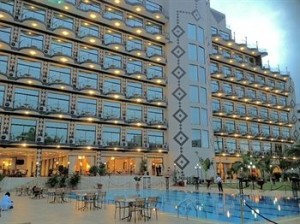 « Allô Allô » non pas en signe d’interjection ; mais parce que c’est l’appellation du téléphone portable au Congo ; comme pour rappeler qu’il n’a pas été inventé dans ce pays. Mais c’est aussi révélateur de la créativité actuelle dans ce pays de 4,5 millions d’habitants avec un PIB par habitant de 4500 dollars en PPA, plus que la moyenne africaine, et un taux de croissance moyen de 5% entre 2005 et 2013.
« Allô Allô » non pas en signe d’interjection ; mais parce que c’est l’appellation du téléphone portable au Congo ; comme pour rappeler qu’il n’a pas été inventé dans ce pays. Mais c’est aussi révélateur de la créativité actuelle dans ce pays de 4,5 millions d’habitants avec un PIB par habitant de 4500 dollars en PPA, plus que la moyenne africaine, et un taux de croissance moyen de 5% entre 2005 et 2013.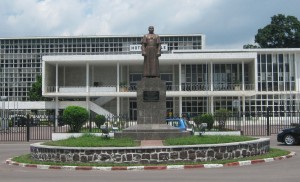 Enfin, La référence, c’est l’autre pour l’ensemble de la population dans la mesure où l’essentiel, voire presque la totalité des produits consommés sont importés. Les chaînes de télévision nationales ne sont pas accessibles, en tout cas pas en ville et en particulier dans les hôtels et restaurants. Tout se passe comme si chacun vivait dans son référentiel sans être soumis au reflet de ce que sont les autres. L’Etat ne se préoccupe pas en premier lieu des plus pauvres ; il se réfère d’abord aux plus fortunés. Cela se comprend parfaitement dans un pays où 65% du PIB est généré par l’exploitation du pétrole.
Enfin, La référence, c’est l’autre pour l’ensemble de la population dans la mesure où l’essentiel, voire presque la totalité des produits consommés sont importés. Les chaînes de télévision nationales ne sont pas accessibles, en tout cas pas en ville et en particulier dans les hôtels et restaurants. Tout se passe comme si chacun vivait dans son référentiel sans être soumis au reflet de ce que sont les autres. L’Etat ne se préoccupe pas en premier lieu des plus pauvres ; il se réfère d’abord aux plus fortunés. Cela se comprend parfaitement dans un pays où 65% du PIB est généré par l’exploitation du pétrole.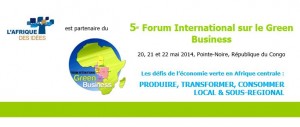 A partir de la définition donnée par le Programme des Nations Unies pour l’Environnement (PNUE), l’économie verte se caractérise par des activités de production et de consommation impliquant un faible taux d’émission de carbone, l’utilisation rationnelle des ressources et l’inclusion sociale. Pour adapter cette définition très générale au contexte africain, (
A partir de la définition donnée par le Programme des Nations Unies pour l’Environnement (PNUE), l’économie verte se caractérise par des activités de production et de consommation impliquant un faible taux d’émission de carbone, l’utilisation rationnelle des ressources et l’inclusion sociale. Pour adapter cette définition très générale au contexte africain, (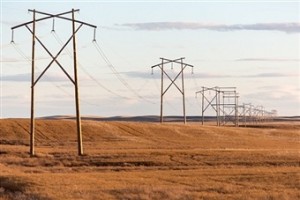 L’association Africa Express a étudié en 2012, 25 projets d’énergie sélectionnés par un Comité Stratégique. A partir du Livre Blanc sur les bonnes pratiques des énergies durables en Afrique, publié par l’Association, nous avons présenté dans un
L’association Africa Express a étudié en 2012, 25 projets d’énergie sélectionnés par un Comité Stratégique. A partir du Livre Blanc sur les bonnes pratiques des énergies durables en Afrique, publié par l’Association, nous avons présenté dans un  BPC Lesedi (joint-venture détenu à 55% par BPC – opérateur national d’électricité botswanais – et à 45% par EDF) est née en 2010 et a pour mission de mettre en œuvre le programme national d’électrification rurale à partir d’énergies renouvelables, solaire en particulier. L’objectif de la politique énergétique du Bostwana est d’atteindre un taux d’électrification de 80% des foyers d’ici 2016 et de 100% d’ici 2030.
BPC Lesedi (joint-venture détenu à 55% par BPC – opérateur national d’électricité botswanais – et à 45% par EDF) est née en 2010 et a pour mission de mettre en œuvre le programme national d’électrification rurale à partir d’énergies renouvelables, solaire en particulier. L’objectif de la politique énergétique du Bostwana est d’atteindre un taux d’électrification de 80% des foyers d’ici 2016 et de 100% d’ici 2030.
 L’entreprise GDC (Geothermal Development Company), créée en 2008, développe l'énergie géothermique au Kenya. La géothermie est l’unique grande source d’énergie encore inexploitée, peu chère, fiable et disponible.
L’entreprise GDC (Geothermal Development Company), créée en 2008, développe l'énergie géothermique au Kenya. La géothermie est l’unique grande source d’énergie encore inexploitée, peu chère, fiable et disponible.
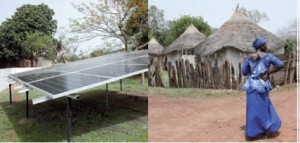 À Dar Salam à l’Est de Tambacounda au Sénégal, l’entreprise Schneider Electric a subventionné l’installation d’une micro- centrale solaire qui permet à l’ensemble du village d’accéder à une énergie primaire grâce à un système de location-rechargement de batteries.
À Dar Salam à l’Est de Tambacounda au Sénégal, l’entreprise Schneider Electric a subventionné l’installation d’une micro- centrale solaire qui permet à l’ensemble du village d’accéder à une énergie primaire grâce à un système de location-rechargement de batteries.
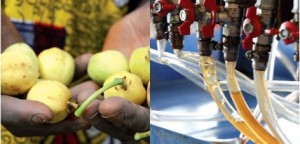 Le Bénin est un pays essentiellement rural qui importe 100% de sa consommation d’électricité et de carburant. À peine 3,5% des populations rurales ont accès à l’électricité et elles ont recours au secteur informel pour s’approvisionner en pétrole lampant et gasoil. Ce déficit énergétique freine le développement du pays.
Le Bénin est un pays essentiellement rural qui importe 100% de sa consommation d’électricité et de carburant. À peine 3,5% des populations rurales ont accès à l’électricité et elles ont recours au secteur informel pour s’approvisionner en pétrole lampant et gasoil. Ce déficit énergétique freine le développement du pays.
 lors que les circuits classiques de commercialisation font des intermédiaires les maîtres du jeu au détriment des producteurs et des consommateurs, les circuits commerciaux courts quant à eux favorisent une augmentation des revenus des producteurs et une amélioration du pouvoir d’achat des consommateurs du fait d’une réduction significative des intermédiaires.
lors que les circuits classiques de commercialisation font des intermédiaires les maîtres du jeu au détriment des producteurs et des consommateurs, les circuits commerciaux courts quant à eux favorisent une augmentation des revenus des producteurs et une amélioration du pouvoir d’achat des consommateurs du fait d’une réduction significative des intermédiaires.
 es échanges commerciaux entre l’UE et les pays ACP sont régis par
es échanges commerciaux entre l’UE et les pays ACP sont régis par  Une enquête de terrain démarre toujours par une intuition, ici celle que l’économie verte au Nord et au Sud ne pouvaient pas être observées avec la même grille de lecture. La définition de l’économie verte donnée par le Programme des Nations-Unies pour l’Environnement (PNUE) apparaît suffisamment vague pour satisfaire les intérêts d’une communauté internationale hétérogène mais bien trop imprécise pour donner à voir une quelconque réalité. Pour le PNUE, « l’économie verte est une économie qui entraîne une amélioration du bien-être humain et de l'équité sociale tout en réduisant de manière significative les risques environnementaux et la pénurie de ressources. Sous sa forme la plus simple, elle se caractérise par un faible taux d'émission de carbone, l'utilisation rationnelle des ressources et l'inclusion sociale». Qu’en retenir ? Simplement que cette économie engage à replacer l’homme et l’environnement au cœur des activités.
Une enquête de terrain démarre toujours par une intuition, ici celle que l’économie verte au Nord et au Sud ne pouvaient pas être observées avec la même grille de lecture. La définition de l’économie verte donnée par le Programme des Nations-Unies pour l’Environnement (PNUE) apparaît suffisamment vague pour satisfaire les intérêts d’une communauté internationale hétérogène mais bien trop imprécise pour donner à voir une quelconque réalité. Pour le PNUE, « l’économie verte est une économie qui entraîne une amélioration du bien-être humain et de l'équité sociale tout en réduisant de manière significative les risques environnementaux et la pénurie de ressources. Sous sa forme la plus simple, elle se caractérise par un faible taux d'émission de carbone, l'utilisation rationnelle des ressources et l'inclusion sociale». Qu’en retenir ? Simplement que cette économie engage à replacer l’homme et l’environnement au cœur des activités.
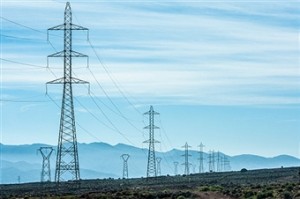 L’un des défis majeurs aux plans de développement des pays d’Afrique subsaharienne est l’insuffisance d’énergie, input incontournable pour l’expansion industriel. Il devient encore plus pressant, dans la mesure où l’intérêt que suscite l’Afrique subsaharienne aux investisseurs, conjugué à l’évolution des sociétés africaines fait croître considérablement la demande en énergie. Cependant, la production énergétique croît très peu depuis les années 90, limitant ainsi l’exploitation des opportunités économiques existantes et générant des tensions sociales, préjudiciables à l’environnement des affaires. Pourtant, le potentiel énergétique de l’Afrique est énorme, notamment dans les énergies renouvelables. Selon l’Agence Internationale pour l’Energie Renouvelable (IRENA), le potentiel hydroélectrique de l’Afrique se chiffre à 1 844 TWh. L’éolienne et le solaire sont aussi utilisables dans la production d’électricité en Afrique. Greenpeace estime qu’avec le solaire photovoltaïque, il est possible de produire entre 15 et 62 GW d’électricité en Afrique. Le Programme Régional Géothermique de l’Union Africaine complète ce tableau en indiquant que le géothermique est aussi prometteur avec un potentiel estimé entre 7 et 15 GW.
L’un des défis majeurs aux plans de développement des pays d’Afrique subsaharienne est l’insuffisance d’énergie, input incontournable pour l’expansion industriel. Il devient encore plus pressant, dans la mesure où l’intérêt que suscite l’Afrique subsaharienne aux investisseurs, conjugué à l’évolution des sociétés africaines fait croître considérablement la demande en énergie. Cependant, la production énergétique croît très peu depuis les années 90, limitant ainsi l’exploitation des opportunités économiques existantes et générant des tensions sociales, préjudiciables à l’environnement des affaires. Pourtant, le potentiel énergétique de l’Afrique est énorme, notamment dans les énergies renouvelables. Selon l’Agence Internationale pour l’Energie Renouvelable (IRENA), le potentiel hydroélectrique de l’Afrique se chiffre à 1 844 TWh. L’éolienne et le solaire sont aussi utilisables dans la production d’électricité en Afrique. Greenpeace estime qu’avec le solaire photovoltaïque, il est possible de produire entre 15 et 62 GW d’électricité en Afrique. Le Programme Régional Géothermique de l’Union Africaine complète ce tableau en indiquant que le géothermique est aussi prometteur avec un potentiel estimé entre 7 et 15 GW.
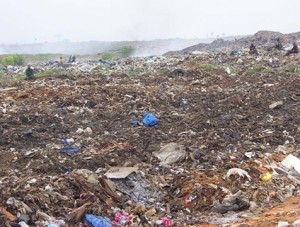
 à la fois les techniques agricoles modernes et les enjeux écologiques en s’inspirant de l’agriculture traditionnelle
à la fois les techniques agricoles modernes et les enjeux écologiques en s’inspirant de l’agriculture traditionnelle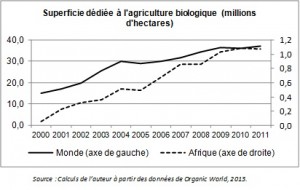 Comme le montre le graphique ci-contre, davantage de terres agricoles sont consacrées à l’agriculture biologique dans le monde et en particulier en Afrique. Ainsi, la superficie des terres d’agriculture biologique en Afrique a été multipliée par plus de 20 entre 2000 et 2011, passant de 50000 à 1,2 million d’hectares. Cependant, en 2011, elle ne représente que 3% de la superficie mondiale dédiée à l’agriculture biologique. Cette faible proportion ne doit pas néanmoins masquer des exemples de réussite tels que l’Ouganda, la Tunisie et l’Ethiopie qui sont les leaders de cette pratique en Afrique. Le cas de l’Ouganda est frappant. En 2010, ce pays représentait à lui seul 21% des terres d’agriculture biologique du continent, avec le plus grand nombre de producteurs et le système institutionnel le mieux organisé. En 2011, l’agriculture biologique en Afrique est davantage consacrée aux cultures de rente telles que le café, le coton, le cacao et l’huile de palme.
Comme le montre le graphique ci-contre, davantage de terres agricoles sont consacrées à l’agriculture biologique dans le monde et en particulier en Afrique. Ainsi, la superficie des terres d’agriculture biologique en Afrique a été multipliée par plus de 20 entre 2000 et 2011, passant de 50000 à 1,2 million d’hectares. Cependant, en 2011, elle ne représente que 3% de la superficie mondiale dédiée à l’agriculture biologique. Cette faible proportion ne doit pas néanmoins masquer des exemples de réussite tels que l’Ouganda, la Tunisie et l’Ethiopie qui sont les leaders de cette pratique en Afrique. Le cas de l’Ouganda est frappant. En 2010, ce pays représentait à lui seul 21% des terres d’agriculture biologique du continent, avec le plus grand nombre de producteurs et le système institutionnel le mieux organisé. En 2011, l’agriculture biologique en Afrique est davantage consacrée aux cultures de rente telles que le café, le coton, le cacao et l’huile de palme.
 En ce qui concerne l’Afrique Centrale, les informations disponibles dans quatre des dix pays de la CEEAC (Communauté Economique des Etats d’Afrique Centrale), montrent une stabilité des superficies dédiées à l’agriculture biologique entre 2008 et 2011, à l’exception de la RDC et de Sao-Tomé et Principe.
En ce qui concerne l’Afrique Centrale, les informations disponibles dans quatre des dix pays de la CEEAC (Communauté Economique des Etats d’Afrique Centrale), montrent une stabilité des superficies dédiées à l’agriculture biologique entre 2008 et 2011, à l’exception de la RDC et de Sao-Tomé et Principe.
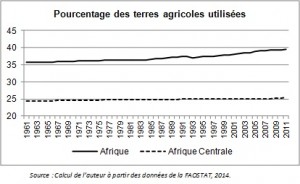 Cet avantage se trouve renforcé par la disponibilité des terres agricoles sur le continent. Selon les statistiques de la FAO (voir graphique ci-contre), seulement 40% des terres agricoles ont été utilisées en Afrique en 2011. Cette proportion chute à 25% en Afrique Centrale, démontrant ainsi une plus grande marge de manœuvre disponible pour l’adoption de l’agriculture biologique dans cette région.
Cet avantage se trouve renforcé par la disponibilité des terres agricoles sur le continent. Selon les statistiques de la FAO (voir graphique ci-contre), seulement 40% des terres agricoles ont été utilisées en Afrique en 2011. Cette proportion chute à 25% en Afrique Centrale, démontrant ainsi une plus grande marge de manœuvre disponible pour l’adoption de l’agriculture biologique dans cette région.
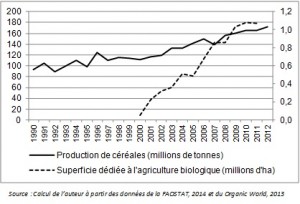 africain dans un contexte mondial caractérisé par une concurrence accrue de la part des pays développés, exacerbée par des barrières non tarifaires et encouragée par les subventions agricoles. En effet, les atouts et potentiels de l’Afrique dans l’agriculture biologique peuvent être utilisés pour diversifier et différencier l’offre de produits agricoles du continent sur les marchés internationaux. Si seulement ces potentiels étaient transformés en performances, à l’instar de l’Ouganda, l’agriculture biologique pourrait être d’une part une source d’entrée de devises grâce aux exportations et d’autre part un moyen de réduction de la pauvreté grâce à l’augmentation des revenus des paysans. Cependant, sa percée est encore entravée par la certification des produits biologiques, gage de débouchés sur les marchés internationaux.
africain dans un contexte mondial caractérisé par une concurrence accrue de la part des pays développés, exacerbée par des barrières non tarifaires et encouragée par les subventions agricoles. En effet, les atouts et potentiels de l’Afrique dans l’agriculture biologique peuvent être utilisés pour diversifier et différencier l’offre de produits agricoles du continent sur les marchés internationaux. Si seulement ces potentiels étaient transformés en performances, à l’instar de l’Ouganda, l’agriculture biologique pourrait être d’une part une source d’entrée de devises grâce aux exportations et d’autre part un moyen de réduction de la pauvreté grâce à l’augmentation des revenus des paysans. Cependant, sa percée est encore entravée par la certification des produits biologiques, gage de débouchés sur les marchés internationaux.
 Aujourd’hui, la production et les exportations des produits agricoles dépendent encore significativement de l’utilisation des pesticides. Comme le montre le tableau ci-dessous, la production et l’exportation de produits agricoles sont plus élevés dans les pays qui utilisent plus de pesticides. L’ordre de grandeur de cette corrélation est similaire qu’il s’agisse des exportations ou de la production de cultures vivrières ou de rente. Cette importance de l’utilisation des pesticides dans la production et l’exportation agricole est liée aux problèmes de certification des produits biologiques qui existent à l’échelle des grands pays/régions importateurs de produits biologiques tels que les Etats-Unis et l’Europe. A titre d’exemple, ce n’est qu’à partir de 2012 que l’Union Européenne et les Etats-Unis d’Amérique ont reconnu mutuellement leurs normes de certification. Cela permet donc aux importateurs de produits biologiques de chaque pays d’acheter des produits biologiques de l’autre pays sans demander une certification nationale.
Aujourd’hui, la production et les exportations des produits agricoles dépendent encore significativement de l’utilisation des pesticides. Comme le montre le tableau ci-dessous, la production et l’exportation de produits agricoles sont plus élevés dans les pays qui utilisent plus de pesticides. L’ordre de grandeur de cette corrélation est similaire qu’il s’agisse des exportations ou de la production de cultures vivrières ou de rente. Cette importance de l’utilisation des pesticides dans la production et l’exportation agricole est liée aux problèmes de certification des produits biologiques qui existent à l’échelle des grands pays/régions importateurs de produits biologiques tels que les Etats-Unis et l’Europe. A titre d’exemple, ce n’est qu’à partir de 2012 que l’Union Européenne et les Etats-Unis d’Amérique ont reconnu mutuellement leurs normes de certification. Cela permet donc aux importateurs de produits biologiques de chaque pays d’acheter des produits biologiques de l’autre pays sans demander une certification nationale.
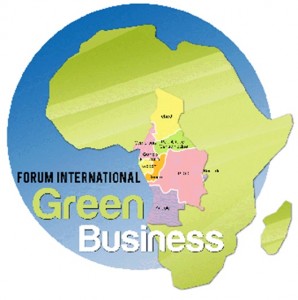 Aventure un peu visionnaire en 2010 lorsqu’il est lancé, le Forum International sur le Green Business peut aujourd’hui être fier du chemin parcouru sous l'impulsion du CCIAM de Pointe Noire, du gouvernement congolais et de la CEEAC. Institutionnalisé par les ministres de la CEEAC en 2012, il a permis une prise de conscience sous-régionale de l’épuisement des ressources et de la nécessité d’aller vers une croissance économique plus durable. Les ministres de la CEEAC ont notamment pris position en faveur de l’économie verte en 2012, à l’occasion de la Conférence Internationale Rio+20. De manière plus locale, la Chambre de commerce de Pointe Noire a lancé en 2013 l’Ecole Supérieure de Commerce et d’Industrie du Congo (ESCIC), avec un master en Hygiène Qualité Sécurité et Environnement.
Aventure un peu visionnaire en 2010 lorsqu’il est lancé, le Forum International sur le Green Business peut aujourd’hui être fier du chemin parcouru sous l'impulsion du CCIAM de Pointe Noire, du gouvernement congolais et de la CEEAC. Institutionnalisé par les ministres de la CEEAC en 2012, il a permis une prise de conscience sous-régionale de l’épuisement des ressources et de la nécessité d’aller vers une croissance économique plus durable. Les ministres de la CEEAC ont notamment pris position en faveur de l’économie verte en 2012, à l’occasion de la Conférence Internationale Rio+20. De manière plus locale, la Chambre de commerce de Pointe Noire a lancé en 2013 l’Ecole Supérieure de Commerce et d’Industrie du Congo (ESCIC), avec un master en Hygiène Qualité Sécurité et Environnement.
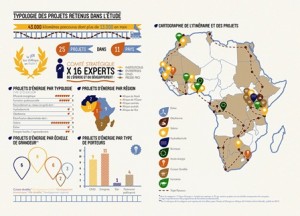
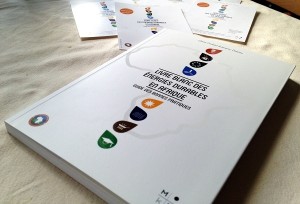 Le livre souligne le rôle primordial du développeur dans la réussite de projet d’énergie durable. Le succès étant conditionné par la bonne articulation entre le financement et l’intégration des parties prenantes. Claire et Jeremy qui se sont posé la question de la reproductibilité des projets, remarquent qu’il n’y a pas de modèle unique mais qu’il faut à chaque fois une importante adaptation au contexte local. Toutefois les bonnes pratiques tirées de l’ensemble des projets étudiés peuvent servir de modèle. A l’attention des porteurs de projets, des bailleurs et des gouvernants en charge de politique énergétique, ils livrent les enseignements suivants :
Le livre souligne le rôle primordial du développeur dans la réussite de projet d’énergie durable. Le succès étant conditionné par la bonne articulation entre le financement et l’intégration des parties prenantes. Claire et Jeremy qui se sont posé la question de la reproductibilité des projets, remarquent qu’il n’y a pas de modèle unique mais qu’il faut à chaque fois une importante adaptation au contexte local. Toutefois les bonnes pratiques tirées de l’ensemble des projets étudiés peuvent servir de modèle. A l’attention des porteurs de projets, des bailleurs et des gouvernants en charge de politique énergétique, ils livrent les enseignements suivants :